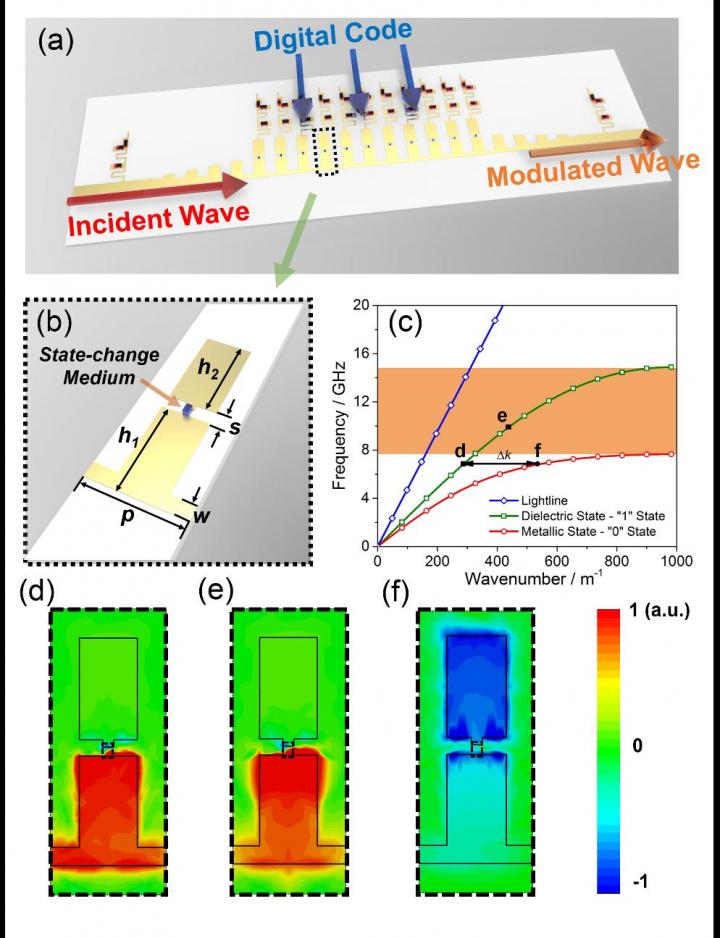Author:
Science China Press
Date
11/24/2019

(a) The schematic diagram of the prototype of the digital SSPP waveguide, which is supported by the direct interaction between the incident wave and digital coding. (b) The schematic diagram of a single digital SSPP unit, which is described by the period p = 3.2 mm, strip width w = 0.5 mm, slit width s = 0.45 mm, height of below metallic bar h1 = 3 mm, and height of upper metallic bar h2 = 2.8 mm. (c) The simulated dispersion curves of the digital SSPP unit with different states. (d-f) The Eigen-mode field distributions of the digital SSPP units with '1' state (d & e) and '0' state (f) at 7.2 GHz (d & f) and 10 GHz (e).
Digital coding and digital modulation technologies are important cornerstones of modern information science and technology, but they are limited in the digital world. In 2014, Prof. Tie Jun Cui at Southeast University and his coworkers proposed the concept of digital coding metamaterials, which combine the digital technologies with the electromagnetic wave manipulations, breaking the barrier between the digital world and physical world. However, manipulating confined electromagnetic waves in deep-subwavelength scale is still a significant challenge in this field.
Recently, Prof. Tie Jun Cui's group at Southeast University (SEU) has collaborated with Prof. Yu Luo at Nanyang Technological University (NTU), Singapore, and reported a breakthrough on this topic in National Science Review entitled "Active digital spoof plasmonics" (the first author is a graduate student, Hao Chi Zhang). In this work, a digital spoof surface plasmon polariton (SSPP) metamaterial is presented to achieve the combination of the tightly confined SSPP waves and the digital coding and modulation technologies.
Research on SSPPs has been a hotspot in the physical and microwave engineering communities since Prof. Tie Jun Cui's group proposed the first ultrathin corrugated metallic strip as the conformal SSPP waveguide in 2013. However, the existing SSPP metamaterials are not tunable after fabrication and cannot realize the real-time manipulations of SSPP waves in the subwavelenth scale. To solve the problem, the SEU-NTU joint group proposed discrete and dynamic controls of the SSPP waves by judiciously designing the surface metallic patterns and state-change medium. Two discrete dispersion states of the active digital spoof plasmonics are constructed, corresponding to "0" and "1" states in the digital world. Based the presented strategy, the joint group successfully designed a SSPP-based digital coding device which can implement both amplitude and phase modulations on a single SSPP platform. Hence, this work breaks the barrier between SSPPs and the digital world, and extends the scope of digital coding metamaterial in manipulating the confined electromagnetic waves, which opens a new avenue to novel system applications based on the digital coding metamaterials.
EurekAlert!, the online, global news service operated by AAAS, the science society: https://www.eurekalert.org/pub_releases/2019-11/scp-bsp112219.php